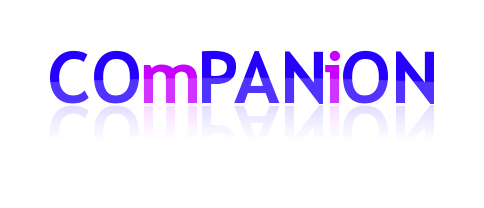
COmPANiON is an Ontology for Collaboration Patterns.
COmPANiON provides a shared, common understanding and definition of Collaboration Patterns concepts within network enterprise collaborations. The objective is to use COmPANiON as the domain ontology within the SYNERGY project, where enterprise collaborations will be facilitated by the use of Collaboration Pattern Services. For these services, we need a formalization that captures the important aspects of a Collaboration Pattern (Pre-Conditions, Post-Conditions, Category, Application Area, Triggers which are Complex Events, etc.).
##Description:
###The need for COmPANiON
Nowadays, many organisations establish Virtual Organisations (VOs), i.e. virtual but legally consolidated schemata for collaborating, in an effort to expand their influence area and widen their profits. A Virtual Organisation constitutes a collaborative environment with increased needs for modelling, executing, monitoring and supporting the dynamic nature of collaborations that it involves. Hence the concept of patterns in VOs becomes critical. Patterns have been first used in software engineering in the book “Design Patterns: Elements of Reusable Object-Oriented Software” by the so-called Gang of Four (Gamma et al., 1995), that advanced the popularity of patterns in computer science. The aim of using collaboration patterns in the VO domain is to enhance support of the networked enterprises in a successful and fast way, by providing an approach for capturing and reusing operations relevant to collaboration. VOs are complex formations that are based on collaboration and the introduction of collaboration patterns will assist and support the whole VO lifecycle.
###The goals of COmPANiON
The aim of the COmPANiON ontology is to: (a) provide a formal representation of a model that describes Collaboration Pattern’s concepts and interrelations; (b) capture the requirements of Collaboration Pattern Services and (c) provide a flexible structure that can be easily refined, updated, extended and instantiated.
The COmPANiON ontology provides a computational medium that can: (a) intelligently match collaboration contexts and requirements to Collaboration Patterns, (b) make intelligent inferences about applying Collaboration Patterns to solve problems at successive levels of abstraction, thus providing the basis for a Collaboration Pattern language, (c) automatically and dynamically classify Collaboration Patterns into pattern languages that can generate complete design solutions and (d) check the consistency of Collaboration Patterns and pattern language attributes.
The COmPANiON ontology is based on a model of collaboration patterns which include the following elements:
- Name: identifier of a collaboration pattern
- Problem: a description of the problem(s) that the specific collaboration pattern has addressed before or it is expected to address in the future.
- VO lifecycle phase: corresponds to the actual phase or phases of the VO lifecycle where the pattern may be applicable
- Application Area: refers to the sector where the pattern was first introduced or will be applicable.
- Pre-Conditions: a list of the states and conditions that must be satisfied before the specific collaboration pattern can be considered applicable.
- Triggers: events and event patterns that can trigger the execution of the specific collaboration pattern.
- Triggers of Exceptions: events that can raise an exception during the implementation of collaboration pattern.
- Roles: includes the roles that are to be involved in the collaboration pattern.
- Input Information: information, documents and data that will be used in terms of this pattern.
- Solution: comprises of prescriptions of solutions to the designated problem that the collaboration pattern addresses, in the form of a scenario. We model the solution of each pattern using BPMN diagrams.
- Output Information: information, documents and data that will be produced after the finalisation of the execution of the pattern.
- Duration: the acceptable duration of the pattern..
- Exception: description of a different course of action (e.g. termination of the specific collaboration pattern and execution of another one)
- Post- Conditions: conditions and states that hold after the successful termination of the collaboration pattern.
COmPANiON builds on and extends the OCEAN top-level ontology for collaborative networked organizations.
##Publications:
COMPANION is the underlying pattern ontology used in the system described in the following publication:
- Yiannis Verginadis, Dimitris Apostolou, Nikos Papageorgiou and Gregoris Mentzas (2009) Collaboration Patterns in event-driven environments for Virtual Organizations, accepted for presentation at the AAAI Spring Symposium 2009 on Intelligent Event Processing, March 23–25, 2009, Stanford University.
##Downloads:
The OWL-DL representation of the COmPANiON top level ontology is available online at:
http://www.imu.iccs.gr/ontologies/companion/owl/
while the Protege file is available at:
http://www.imu.iccs.gr/ontologies/companion/pprj/

